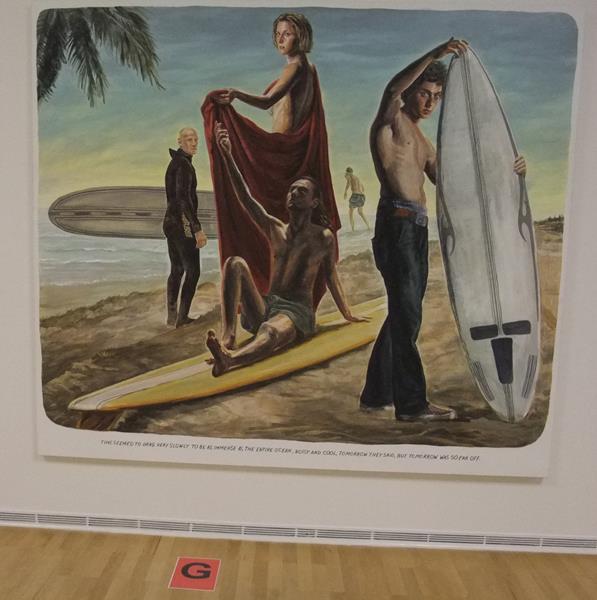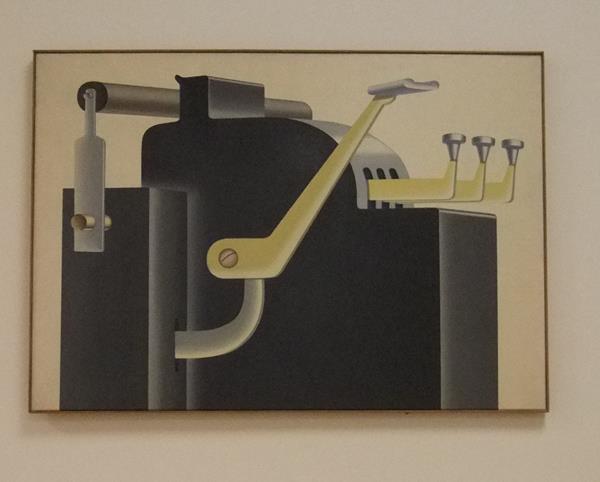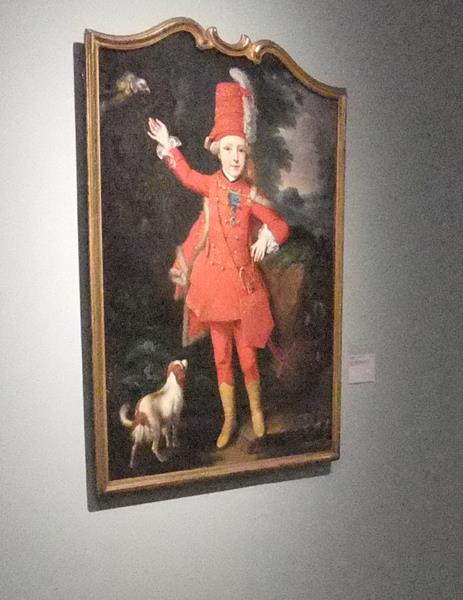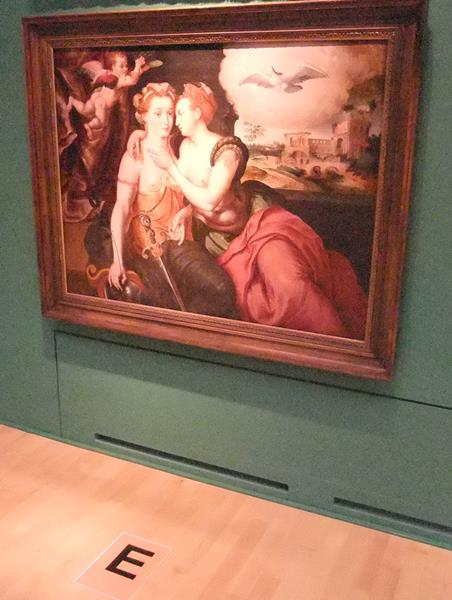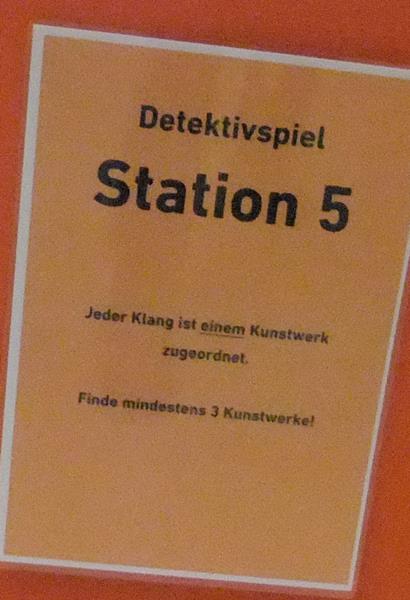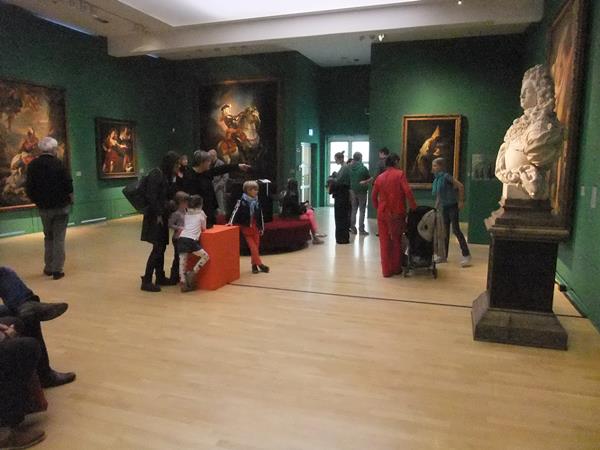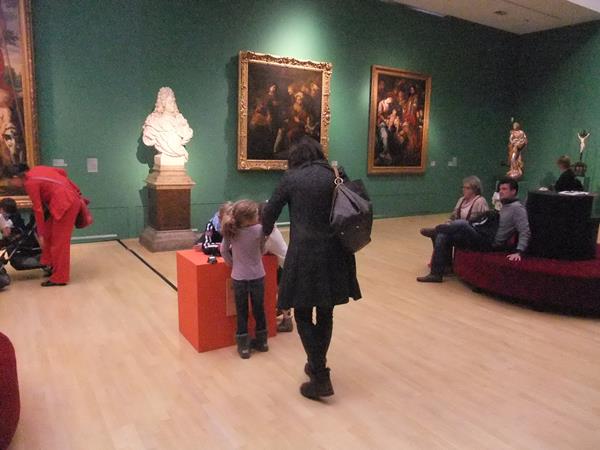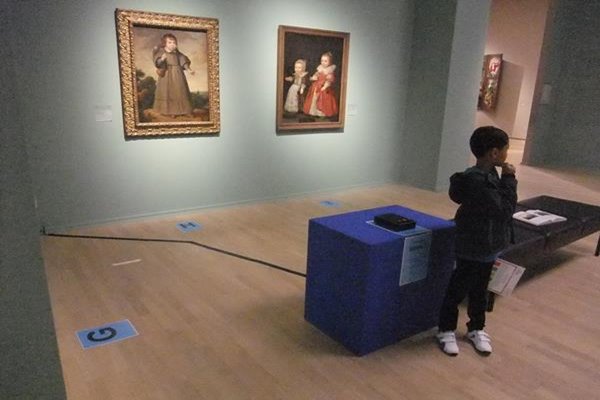
Geeignet für den Tag der offenen Tür oder auch als Dauerinstallation.
Wir bieten an: Auswahl von geeigneten Bildern und Objekten, Liefern der Geräusche zu den Bildern/Objekten, Einrichtung der Installation, Vermietung oder Kauf der Player, Durchführung eines Workshops.
"Bilder hören" ist ein Spiel. Ziel ist es, sich mit Bildern und Kunstobjekten intensiv zu beschäftigen.
Funktionsweise
1. Man wählt entsprechende Kunstobjekte im Museum aus.
Workshop - Vorschlag: Man bildet Gruppen, die sich die Kunstobjekte anschauen und eine Art Rangliste anlegen mit den Sachen. die am meisten ansprechen oder am geeignetsten
für das Spiel erscheinen. Danach treffen sich die Gruppen und einigen sich für je ein Werk pro Gruppe.
2. Es werden Details auf dem jeweiligen Bild oder Objekt gesucht, die sich für Klänge und Geräusche eignen. Oder man findet zu einem Thema ein passendes Geräusch.
Reizvoll ist es, Details zu finden, die nicht im Vordergrund des Bildes, sondern eher versteckt zu finden sind, um so mehr muss das Publikum suchen und um so genauer betrachtet es das Kunstwerk.
3. Die passenden Geräusche und Klänge werden aus eigenen Klangsammlungen oder aus dem Inernet gesucht und sortiert.
4. Die Klänge und Geräusche werden in die Soundbox eingespielt.
Suitable as short time event or as permanent installation.
We offer: Developing and implementing of sound recordings to a selection of your pictures and/or objects. Realization of a workshop / workshop concept if desired.
"Hearing Pictures" is a game which is not only applicable to the average visitor but also for groups who want to do a focused workshop. The goal of “Hearing Pictures” is
to deal intensively with pictures and art objects through sound.
THE PRODUCTION / WORKSHOP PROCESS
The following process could be done by ourselves as a groundwork for the final installation but could also be done within a workshop with interested participants during a certain event.
1. Selection of appropriate objects of art in the museum.
Suggestion for a workshop: The whole group will be divided into several teams which then look at the displayed art objects and create a kind of ranking list
with the things they like the most or which deemed most suitable for the game. Each team chooses one (or two or three...) favorits. Afterward, the teams will meet and compile their selection.
2. Now it is time for a closer look at the selected pictures / objects. The task is to find details on the pictures / objects that are suitable for sounds and noises or
that have references to certain associations inherent to the picture / object which can be expressed by sound.
To increase the later challenge it is recommended to choose details that are not in the foreground of the picture, i.e. that are not superficial but rather hidden. The idea
behind that is that the more the viewer has to look for a certain detail the more diligent he has to examine the artwork.
3. The suitable sounds will be collected and prepared (e.g. through a research of online sound data or through own recordings, etc.).
4. Finally the collected sounds have to be integrate into the specific distribution system which will be suitable for the museum, e.g. a unique sound box or a audio guide system.
Jeder Besucher bekommt eine Anleitung mit Karte. Darauf sind die Räume und die bearbeiteten Bilder eingetragen.
Nun kann man sich mit Hilfe der Soundbox die Geräusche anhören und muss diese den Bildern zuordnen. Man schreibt die Nummer des Geräusches in die entsprechende Zeile der Karte ein.
Every visitor gets a guide with a map. This map contains the rooms and the edited pictures / objects. Additionally you get a list where you can assign every sound to a certain picture / object.
Now the task is to go from picture to picture (resp. object) and listen to the several sounds (through a sound box or audio guide etc.) until you are able to assign every
sound (which are indicated through numbers) to one picture / object in your list.
It is like a little sound detective story: “To which picture could this or that sound be appropriate? Is that a whistling and blowing like wind? Which of the pictures has
to do with wind or storm ? Ah... over there! There is a beach and heavy clouds shown. That must be the right picture.” (and so on).
After all a little rewarding system is recommended. E.g. if the participant fulfilled the list correctly some sweets or a certificate are waiting at the exit...

